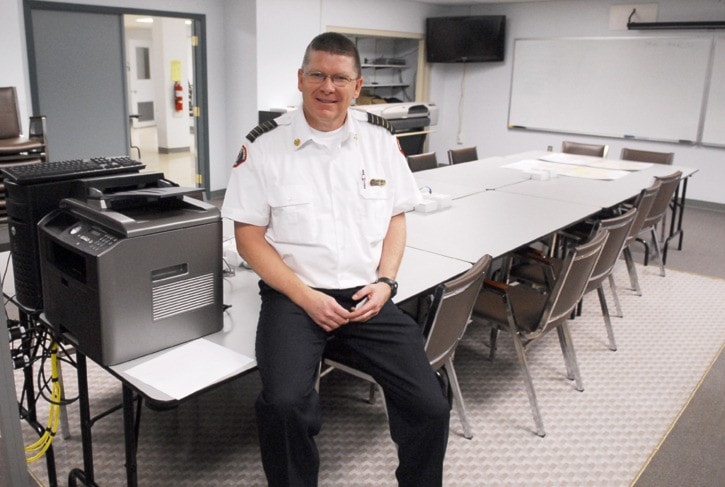A federal government cut to the Joint Emergency Preparedness Program could spell disaster to the outfitting of the local emergency preparedness centre.
When the federal government announced its intention to cut funding in its omnibus budget bill on a 30-year funding program designed to help cover the costs of emergency preparedness, Kootenay Boundary Fire Rescue (KBFR) department flinched.
The department has used Joint Emergency Preparedness Program (JEPP) funding every year since it set up the first emergency operations centre in the district seven years ago.
According to KBFR regional chief Terry Martin, the majority of the equipment in the emergency operations centre (EOC) was paid for by JEPP funds.
“We would have been short that money in setting up the centre and would have had to take money away from something else,” he said. “I think the cut will (hurt).”
The “brains” of any major disaster situation, the EOC contains operations, logistics, planning, finance and administration in its rooms in the lower level of the Greater Trail Community Centre.
The centre features full inter connectivity for fire, police, ambulance and public works, four stations with full radio capabilities for all jurisdictions in this regional district, a backup generator and a meeting room for government decision makers.
“There is a lot of equipment here, but we plan for the worst case scenario,” said Martin.
KBRF deputy chief Dan Derby said the department has received JEPP grants for seven years and has been the major factor the region possesses such a well-equipped emergency centre.
This year the final installment of the grant money ($10,000 to KBFR) will be used for an emergency plan review and an exercise.
“What this really comes down to now is that some of the things that are nice to do—emergency plan review—will likely be extended out to the future because the time, resources and the manpower won’t be there,” said Derby.
“And identification of future projects … will be hard to fund without that funding.”
Even without the JEPP program there is money within the regional district’s budget for emergency operations, but KBFR needed JEPP funding to support and fully outfit the EOC.
As part of JEPP, the federal government has picked up as much as 75 per cent of the cost of eligible projects, like Trail’s EOC.
Only two major incidents have been hosted at the EOC since it opened: a wildfire near Toxco two years ago; and an actual fire at Toxco three years ago where the building “blew up.”
The region’s two search and rescue teams, however, will not be affected by the program cut. The South Columbia Search and Rescue team, like Rossland Search and Rescue, draw funds from the regional district, Columbia Basin Trust, provincial gaming grants, donations and fundraising.
Through Public Safety Canada, JEPP enabled support of projects with the provinces and territories to create a uniform level of emergency preparedness and response across Canada.
About $2.3 million has been earmarked for the program’s final year which ends April 1, 2013. The funds are allocated to the provinces which, in turn, sort through the various proposals submitted by municipalities.
A 2008 evaluation of the program found a need for the federal government to contribute to emergency management at the provincial and federal levels, and the absence of JEPP would “significantly and negatively” impact emergency preparedness at the community level.
Established in 1980, JEPP ceased operations at the Canadian Emergency Management College which has offered training to emergency responders since 1954.
